Runaway Partners - Baroda State Jewels and Sita Devi
Written by : Amita Roy
Dated: January 15,2018
Share
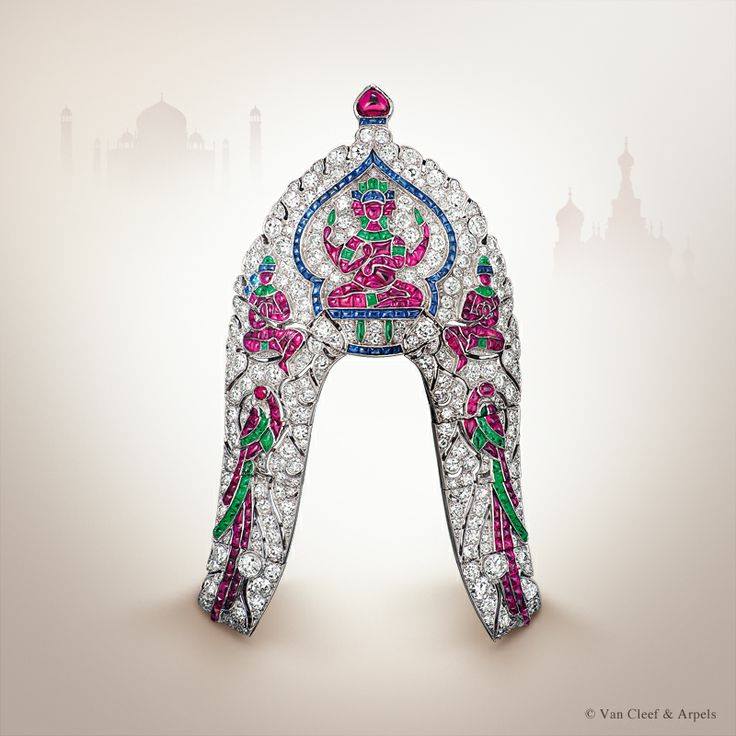
One of the famous Baroda Jewels. Courtesy - Van Cleef and Arpels
May, 1955
Ministry of Home Affairs, New Delhi
The phone in the office of Govind Ballabh Pant rings. On the other side, it is the anxious young Maharaja of Baroda, Fatehsinh Gaekwar who is calling from the comfort of his Lakshmi Vilas Palace located at faraway Baroda in the Bombay Presidency. Someone from the Indian Administrative Service takes the call. The Maharaja informs the official that a considerable huge portion of his private jewelry collection which was stored in the State Jewel House or Javerkhana of the former Baroda state is missing. The official informs the Maharaja that Home Minister Pant Saheb will be informed and Gaekwar will be updated about any decision taken by the Ministry.
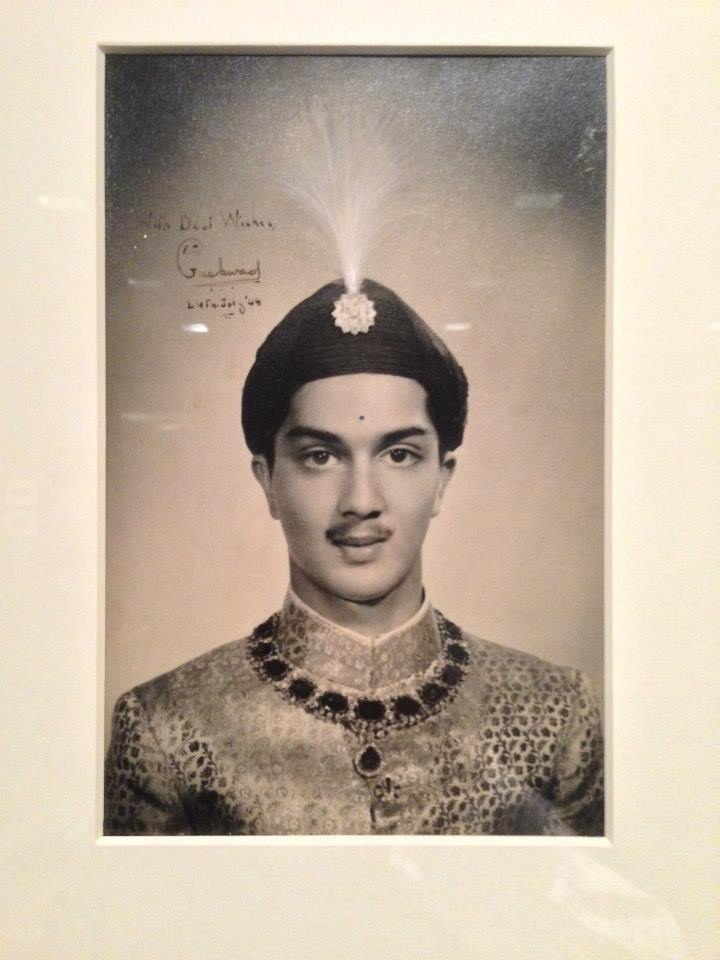
Maharaja of Baroda Fatehsinh Gaekwar in 1952.
A high level meeting is put up at the Home Ministry where Baroda matter was discussed and all aspects of the case, why, how and in what capacity Govt. of India can assist in this jewelry heist. The Govt. of India decides to go ahead with the assistance and forwards a helping hand to HH Fatehsinh Gaekwar. Immediate investigation starts but it was a very high level confidential investigation which remained confined between certain Ministries, diplomats and legal officials.
The investigation started from two parallel levels. First, it started from Maharaja of Baroda Fatehsinh Gaekwar appointing his lawyer K. K. Shah Esq. of Bombay to start the legal investigation and accordingly take action. After K. K. Shah took the entire charge of the case, he started his side of the investigation from the Javerkhana or the Baroda State Jewel House. The first piece of information that he had to give importance was that he got to know from the Javerkhana records that in 1947, ex-Ruler Maharaja of Baroda Pratapsinh Gaekwar and his second wife Lady Sita Devi had already removed a huge portion of the jewelry from the State Jewel House and left India immediately. From whatever was remaining, an inventory of dynastic, private and personal jewelry collections were ascertained and submitted to the newly formed Govt. of India. The said jewels which are gone missing belonged to the private collection of the then present Baroda Maharaja. Information from reliable sources reached K. K. Shah that on 22nd October in 1954, Lady Sita Devi had arrived in U.S.A. through New York using a British Passport and a Diplomatic U.S. Visa which gave her the immunity of carrying as much luggage she wanted and all unchecked by Customs at entry point. Shah immediately left for U.S.A. and on arrival, he met the Indian Ambassador in U.S.A., Gagan Lal Mehta. He appointed Messrs. Dunn & Zuckerman of New York as Attorneys to investigate the case.
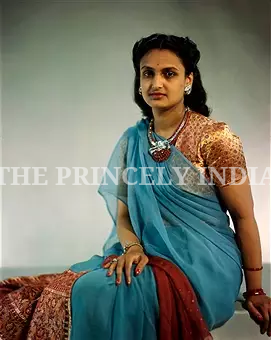
Second wife of deposed ex-Ruler Maharaja of Barod, Pratapsinh Gaekwar, Lady Sita Devi
Second investigation was initiated by Ministry of Home Affairs, Govt. of India. The first thing Home Ministry weighed was that as the jewelry was private property of the Maharaja of Baroda, how far it will be viable for them to interfere or assist or play any role in this entire case. Secondly, though these items were necessarily belonging to India if they were made in India, how to decide whether they actually belonged to Maharaja of Baroda and was indeed manufactured in India. Thirdly, any jewelry exported out of India and sold in foreign countries should be intimated to the Reserve Bank of India before its export. Export of jewelry without the permission of the Reserve Bank of India was prohibited u/s 8(2) of the FERA Act of 1947. Permission without Reserve Bank of India was a punishable offense u/s 23(1) of the same act. The Ruler was supposed to surrender the foreign currency to Reserve Bank of India in lieu of Indian currency. Keeping all these factors in mind, Home Ministry requested Ministry of External Affairs to cooperate with them in tracking down the jewelry pieces to recover and inform the Indian Embassies abroad to coordinate.
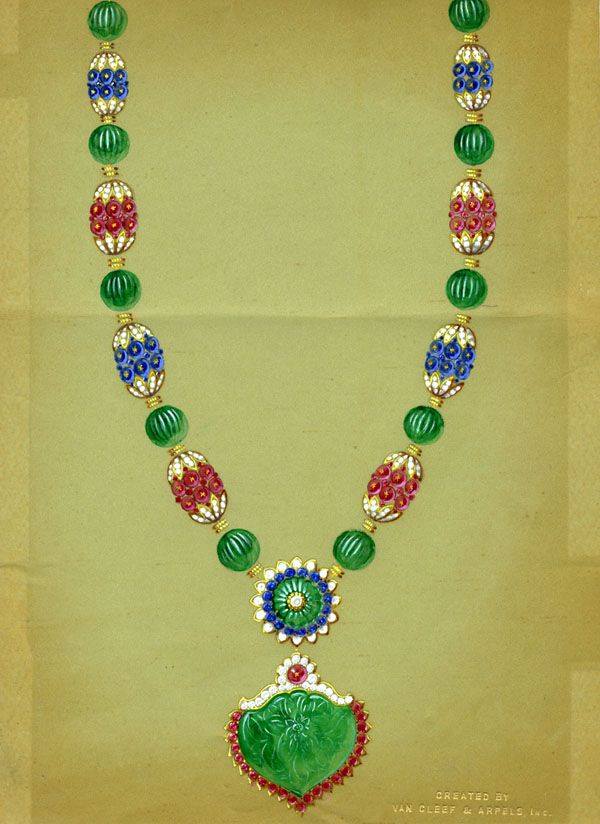
Baroda Jewels . Courtesy - Van Cleef and Arpels
From the investigation initiated by Govt. of India, it was found out that Lady Sita Devi had arrived in New York on 22nd of October, 1954 using her British Passport number 1431374 which was issued in October 1945 in London, showing C/O High Commission of India in London as the local address. In the Passport, she is a mentioned as Her Highness Sita Devi, Maharani of Baroda Gaikwad, and the Diplomatic Visa number 966358 was granted to her by one of the U.S. missions abroad, was on the basis of the status displayed in the Passport. Due to Diplomatic Visa, she was exempted from any weight limit of the luggage or customs checking. Hence it was clear that Lady Sita Devi took the jewelry to U.K. without letting the proper authority of the Govt. of India know about it. Most probably she has done it prior to 1951 when her husband, the Ex-Ruler Maharaja Pratapsinh Gaekwar was deposed off by the Govt. of India as the Maharaja of Baroda due to his unceremonious actions. Also the marriage between Lady Sita Devi and Ex-Ruler of Baroda was never recognized by the Crown Representative or Govt. of India. Hence it was not clear on what grounds the British Govt issued her the British Passport. Also the Indian Ambassador in U.S.A. was requested to inform the United States State Dept. to revoke the Diplomatic Visa of Lady Sita Devi and an ordinary Visa may be issued in place.
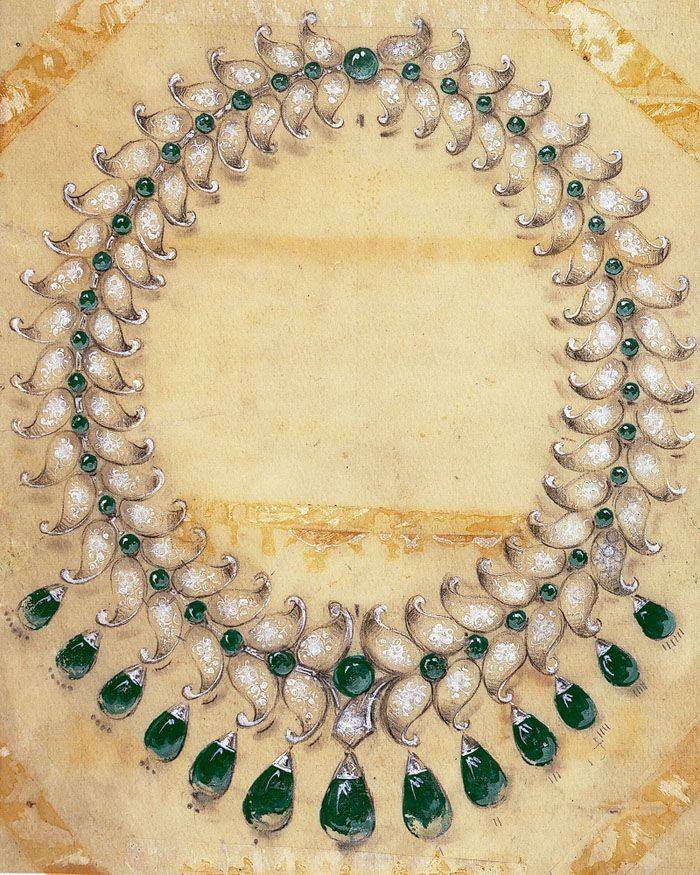
Baroda Jewels . Courtesy - Van Cleef and Arpels
The investigation started by the law firm Dunn & Zuckerman brought many important facts into spotlight. Already, some pieces of jewelry, either in original form or modified had been offered on sale to Middle Eastern Countries. Indian ambassadors to these countries were expected to render as much as help as possible to recover the jewelry intact or to stop the jewelry from being altered beyond recognition. Secondly, some of the jewelry that Sita Devi has exported were sold to Ex-Ruler by the famous upscale jeweler from New York, Harry Winston at a whopping price. In the entire investigation, Harry Winston was the single most prominent name which was popping up every time. It was found out by the reliable sources that Harry Winston purchased back the same pieces of jewelry in a fraction of a price that he sold to the Ex-Ruler of Baroda. They also got to know that around $1 million worth of further jewelry was kept in a secret bank vault in New York but not known in whose name the vault was. Beside these lots of jewelries, some more jewelry was found to be sold in France. Though Lady Sita Devi had no right to bring out the jewelry or sell the jewelry, and apprehensive of court cases and law, she is moving the jewelry from one country to another country, selling it or altering it beyond recognition for further sale.
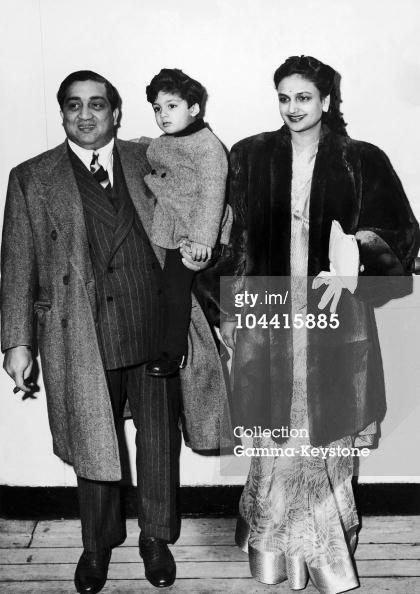
Maharaja of Baroda Pratapsinh Gaekwar with Lady Sita Devi in happier times. Photo - Getty
Seeing the circumstances, Morton Zuckerman informed the Indian Ambassador G. L. Mehta in U.S.A, K.K. Shah and Indian Govt. that certain actions have to be taken immediately. From the correspondence between the Dunn & Zuckerman, G.L. Mehta, K.K. Shah, Govt. of India, it can be seen that Dunn & Zuckerman suggested certain immediate actions to be initiated urgently by K. K. Shah as he was the one who had been given power by the Maharaja of Baroda to take any decision. Zuckerman clearly stated that two immediate legal actions has to be taken –
a) Legal proceedings should be instituted in the States against both Harry Winston and Lady Sita Devi who was both at that moment were in the States and in possession of the jewelry.
b) To ascertain the authentic ownership of the jewelry by the Maharaja of Baroda, records from the Javerkhana, purchase records of the jewelry from Harry Winston if any and the witness of the two key officials of the Javerkhana.
c) Witness of the Ex-Ruler Maharaja Pratapsinh Gaekwar if he wishes to.
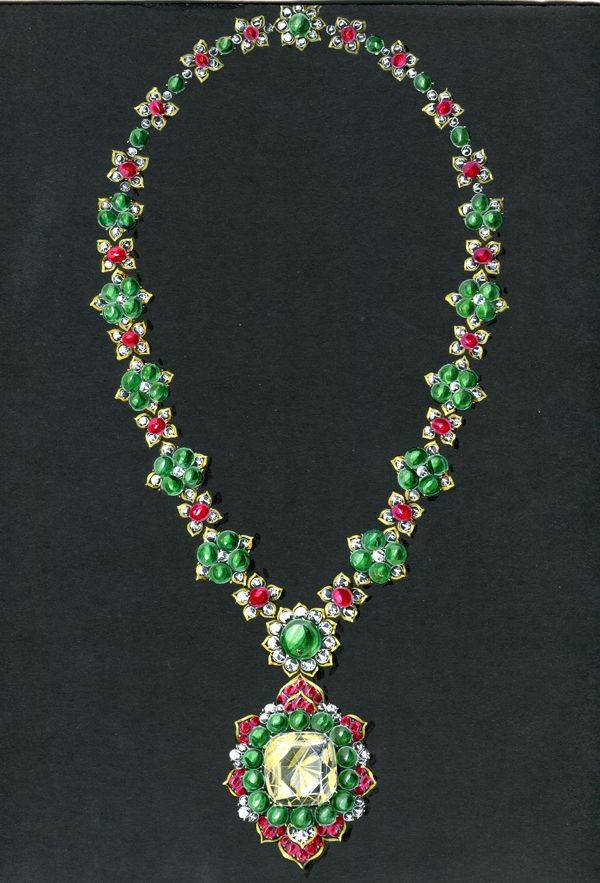
Baroda Jewels. Courtesy - Van Cleef and Arpels
The unsavory part that the Attorney firm Dunn & Zuckerman came across was that though ex-Ruler Pratapsinh Gaekwar had promised Mr K. K. Shah that he will identify the pieces of jewelry and will give a legal statement, but when the sources of the attorney firm in New York informed them that ex-Ruler Pratapsinh Gaekwar had sold $25,000/- worth of uncut precious gem stones to Harry Winston in the same year and that, Winston had sent some hard cash to the Ex-Ruler in Nassau, it won’t be legally and logically feasible to discuss anything about Winston with the Ex-Ruler as there will always be a chance that he will spill everything to Winston.
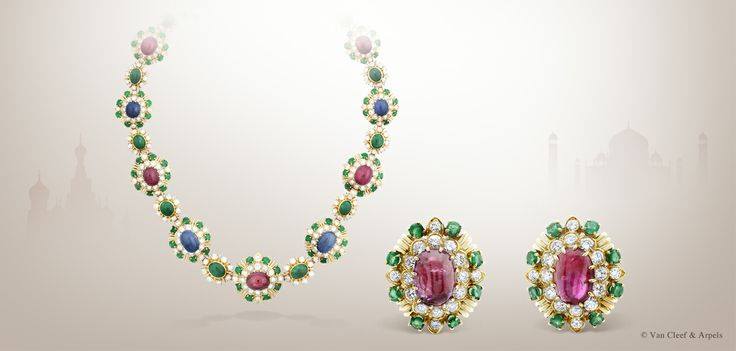
Baroda Jewelry. Courtesy - Van Cleef and Arpels.
The only solution to all this without his statement is the Javerkhana records. Meanwhile, Shri Fadnis of the Javerkhana sent a detailed list to the attorney firm about the jewelry compiled from the Javerkhana. The attorney firm had already sent him several photos of the jewelry and their descriptions. Fadnis could identify the Briolette necklace, ear clips, and anklets. On the basis of these 3 identifications, Dunn & Zuckerman wanted to initiate legal action against Winston but Mr. K. K. Shah had reservations in taking any legal action against Winston.
Furthermore, Mr. Shah exerted his point that the American Customs should seize any jewelry from Winston but the attorney firm clearly said that the Customs cannot take legal action despite knowing that Baroda jewelry is still in U.S.A. as violation to these two clauses is a must which has not yet happened.
a) Jewelry of American manufacture and origin which may be freely re-imported without declaration or payment of any duty.
b) Jewelry of other origin that was brought here as items of personal adornment and which have been here for more than 3 years. Some of the jewelry of this category was sold by Sita Devi to Winston. It is under New York State Sales law that Winton can be booked under law.
But seeing the hesitation of Shah, Dunn & Zuckerman immediately wrote to the Indian Ambassador in USA, Gagan Mehta that they cannot take any action unless K. K. Shah takes any immediate decision. This indecisiveness of Shah was conveyed to Govt. of India who sent the case to Law Ministry to check any merit to take legal action against Harry Winston.
Law Ministry after studying the case in detail advised Govt. of India not to initiate any legal step against Harry Winston and also suggested as follows-
a) The main thing is to first determine the origin of the jewels that it genuinely belongs as the private property of the present Maharaja of Baroda.
b) There is no extradition treaty between India and USA. Hence American Govt. is under no compulsion to extradite Harry Winston as per the verdict of Indian laws or even American laws.
c) The case may be filed in London against both Winston and Lady Sita Devi as India and U.K. has Extradition Treaty and so between U.K. and U.S.A. Also a similar case can be lodged in India against Lady Sita Devi and all her movable and immovable assets may be confiscated.
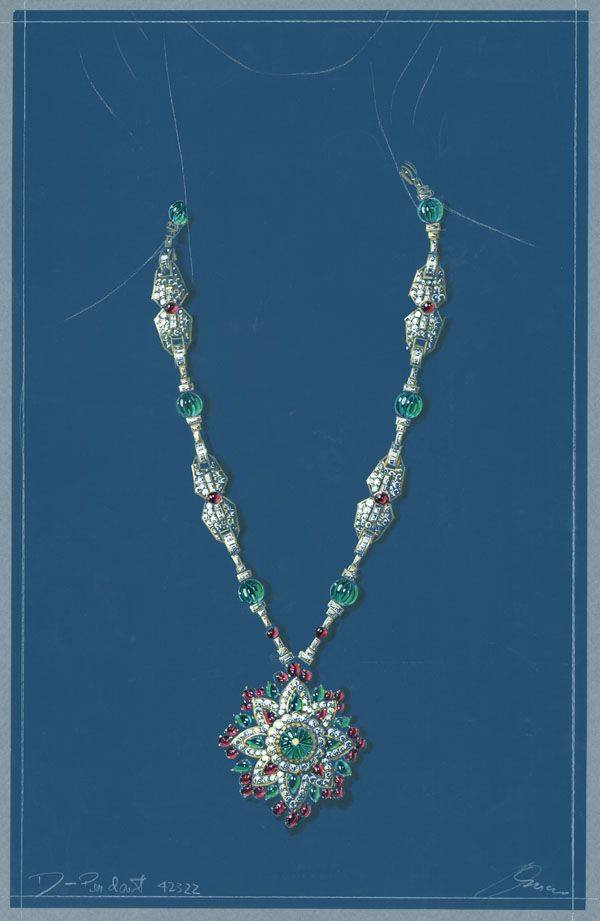
Baroda Jewelry. Courtesy - Van Cleef and Arpels
But in all these communication and correspondence which had almost reached June 1956, Shri K. K. Shah had only answered few times. In his last major correspondence with the Indian Ambassador in U.S.A., he was clearly apprehensive of initiating any legal action against Harry Winston. Also he was not much in favor in giving any further authority to the current attorney firm in New York, Dunn & Zuckerman. He suggested an alternate attorney, also from New York for consultation. In any case, Govt. of India met both Shah and Morton Zuckerman in New Delhi and clearly asked for their next course of actions. They as usual stuck to their recent opinions.
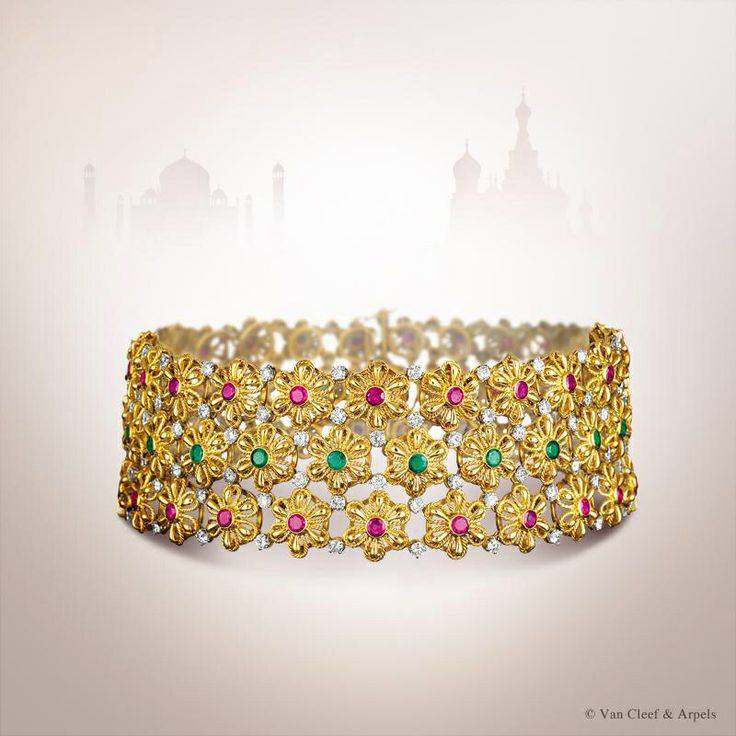
Baroda Jewels. Courtesy - Van Cleef and Arpels
Meanwhile, U.S. State Dept. was informed about the marital status of Lady Sita Devi. Ex-Ruler Pratapsinhrao Gaekwar divorced Lady Sita Devi in City Civil Court in Bombay in March, 1956. In any case, even before this divorce, their marriage was not recognized by Crown Representative or Govt. of India. Hence she was never in a position to claim any relationship with the main family of the Baroda ruler. It even came to spotlight that Ex-Ruler had gifted her Deed of Gift favoring her to gift these jewels. But even if Harry Winston knew that these were indeed gifts, still Sita Devi had no rights to sell. The Commonwealth Relationship Office in UK was informed about her Passport. They refused to cancel her Passport but said hen she will apply back for renewal, she will be advised to head to the India office for Passport clarification.
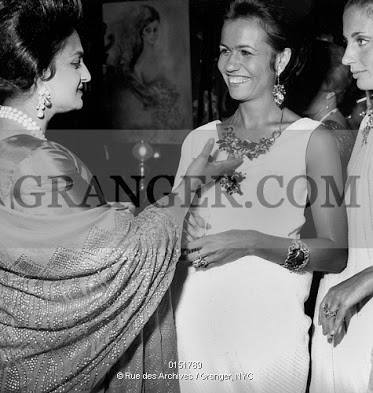
MAHARANI OF Baroda - Party given at Vagenende restaurant in Paris : Maharani of Baroda who had the most beautiful jewels in Paris and the jeweller Irene Jacob june 17, 1966. Full credit: AGIP - Rue des Archives / Granger, NYC .
Among all these fiasco, the increasing disinterest of the young Maharaja of Baroda and Shri K. K. Shah to initiate any legal action against Harry Winston or Lady Sita Devi led the Indian Govt. also to abandon the investigation in the middle. Therefore, the entire matter was abandoned officially further by the young Maharaja of Baroda Fatehsinh Gaekwar.
But in all these hype and hoopla, many unknown facts came into fore front. It came into light that it was not only Baroda jewels that was reaching Harry Winston through his agents in Bombay, but also of many royal families, particularly, the Indore jewels; which is an entirely unknown story.
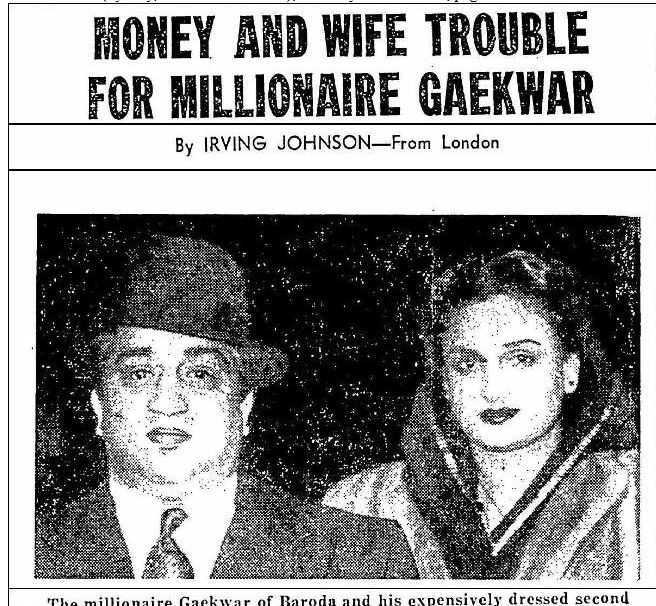
Divorce was formalised in 1956 which was all over global media.
Why this entire fiasco?!
The main reason was that Gaekwar of Baroda was the 8th richest person as of 1948 in the entire world. He had a net personal worth of Seven million GBP and Two Million GBP worth of jewelry. He was deposed by Nehru as he was blamed to have created a ‘trade union’ of sort of pensioned Maharajas to claim back their power. An Australian Newspaper states –
“During his 12-year reign he gained an international reputation as one of the greatest spenders in history. He dealt out millions for race horses and jewels for his second wife. He and his wife lost fortunes at Monte Carlo. He bought an 89 acre estate near Surrey, England, and the 460-acre Connellmore estate at Newbridge, County Kildare, Ireland, converting it into an elaborate stud farm. Between 1945 and 1947 he spent £700,000 on racehorses. He paid £750,000 for Warren Place, a sumptuous house and stables at Newmarket, England. He has been called one of the three heaviest plungers on the Riviera. They were named, in order: the gaekwar, Prince Aly Khan and Bao Dai, ex-Emperor of Annam. Meanwhile, he bought his second wife a villa at Cannes and a luxury apartment in Paris. Sita Devi was a sensation in Paris. She wore glittering gold saris, large pearl earrings and bracelets, adorned with double rows of pearls. She was described as being ablaze with diamonds, sapphires and rubies. She wore a diamond sickle in her hair and carried a knitted bag of filigree beaten gold."
But also years before around 1949, a closed chapter also reminded about the similar jewelry being absent when HH Dowager Maharani Chimnabai Gaekwar and her 3 widowed daughter in laws, Shakuntalaraje, Kamala Raje and Vimala Raje complained that they have not received their Stree Dhan Jewelry which was in the State Jewel House of Baroda and was missing from there altogether. It was doubted that Lady Sita Devi had also taken away their portion of jewelry from the Javerkhana.
.jpg)
Maharaja Pratapsinhrao Gaekwar deposed in 1951 became global news.
After her divorce with Maharaja Pratapsinhrao Gaekwar in 1956, Lady Sita Devi encashed almost all the Baroda jewels as early as possible. As she was from Pithapuram Zamindari of Andhra, she was very close to the Governor General of Ceylon Sir Olivier Goonetileke and ex PM John Kotelewala. She was having talks of investing some of her money in the then upcoming General Motors assembly plant in Ceylon. No matter what, she went on to become one of the most enigmatic Indian royals abroad.
